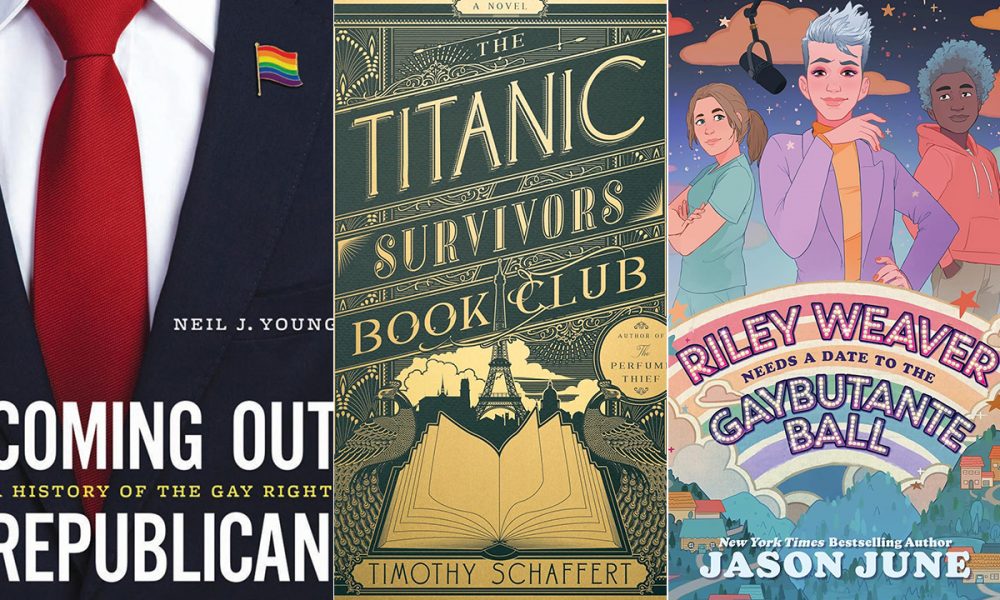‘How to Live Free in a Dangerous World: A Decolonial Memoir’
By Shayla Lawson
c.2024, Tiny Reparations Books
$29/320 pages
Joan Didion, one of the greatest writers and journalists of the 20th century and 2000s, wrote superbly crafted essays – telling engaging stories about the places she traveled to. Reading her, you sensed Didion reacting personally to her travels, and, as a writer, clocking it. To write in stories for her readers.
Shayla Lawson, a nonbinary, Black, disabled poet and journalist, is the Joan Didion of our time.
Their new work, “How to Live Free in a Dangerous World: A Decolonial Memoir,” is a provocative, impeccably crafted, hard-to-put down, travel memoir in essays. (Lawson uses they/them pronouns.)

Lawson is author of “This is Major,” which was a finalist for the National Book Critics’ Circle and the LAMBDA Literary Award, and the author of two poetry collections, “A Special Education in Human Being” and “I Think I’m Ready to See Frank Ocean.” They have written for New York Magazine, Salon, ESPN and Paper, and earned fellowships from the Yaddo and the MacDowell Artist Colony.
Yet, despite this impressive track record, Lawson, who grew up in Kentucky, and has lived and traveled everywhere from the Netherlands to Brazil to Los Angeles to Kyoto, Japan to Mexico to Shanghai, had to wait nine years before a publisher would wrap their head around releasing a travel memoir in essays.
Thankfully, Lawson had the chutzpah to persist in seeking a home for her memoir. Kudos to Tiny Reparations Books for valuing Lawson’s writing and publishing ‘How to Live Free in a Dangerous World.”
From the get-go of their memoir, Lawson draws us in. We’re with them on the plane. Right away, we’re with Lawson – a writer who’s clocking it – telling their story – while they’re on the plane. At the same time, we’re reading the story that Lawson’s writing.
In a few nano-secs, we get that Lawson’s stories have a queer, Black sensibility.
“Our story starts in an airplane,” Lawson writes in the opening of the memoir, “with the sound of long acrylic nails tapping on laptop keys, the sound of black femme poetics…”
“Only connect,” writes queer writer E.M. Forster in his 1910 novel “Howards End.”
Lawson’s daring memoir is a dazzling mosaic of connections between race, class, gender, sexuality, death, queerness, love, disability, grief and beauty.
Lawson met Kees, their ex-husband, a white man from the Netherlands, when he was in Harlem during a layover on a flight to Brazil for a six-month back-packing trip through South America, Lawson recalls. They meet cute over pizza, fall in love, and marry.
In the Netherlands, Lawson has to learn a new language and is stuck living in a beautiful, but boring village. They volunteer at a refugee village, that Lawson discovered had been an “insane asylum.” That village, Lawson thought, wasn’t beautiful.
Lawson discovers beauty and sexuality when she meets up with a hunky gondolier in Venice.
In post-dictatorship Zimbabwe, they experience what it’s like to hang out with other Black people, where everyone is Black.
In one of the memoir’s most compelling chapters, Lawson visits artist Frida Kahlo’s house in Mexico City. Kahlo was disabled. She had spina bifida.
At age 39, Lawson was diagnosed with Ehlers-Danlos syndrome. They have chronic pain from the disability.
A doctor (with the bedside manner of Attila the Hun) told Lawson that they would die. “It’s a strong presentation,” Lawson remembers the doc said to her.
Often, disability is left out of storytelling. If included, it’s put in a box – separated, disconnected, from other intersections of the narrative (gender, sexuality, race, class, sexual orientation, etc.).
One out of five Americans is disabled, according to the U.S. Census Bureau, and Lawson writes, post-COVID that 60 percent of Americans have been diagnosed as chronically ill.
Lawson brings ableism out of the shadows.
I’m white, cisgender, queer and legally blind. I’m one of the many for whom Lawson’s experience of ableism will ring true.
They’ve “called me a bitch,” for moving slower, Lawson writes.
The last time Lawson traveled when “I didn’t return in a wheelchair,” was 2019, they write.
But that won’t stop them from traveling, Lawson writes.
“How do I want to live,” Lawson asks, “in such a way that someone will be honored by how I die.”
“How to Live Free in a Dangerous World” is exhilarating, but sometimes discomforting reading. Lawson makes you think. If you’re white and, using all the right pronouns, for instance, you can still be clueless about racism or being entitled.
But Lawson’s memoir isn’t a hectoring sermon. It’s a frisson of freedom, liberation and hope.
“No matter where you are, may you always be certain who you are,” Lawson writes, “And when you are, get everything you deserve.”
Check it out. You won’t be able to get it out of your head.
